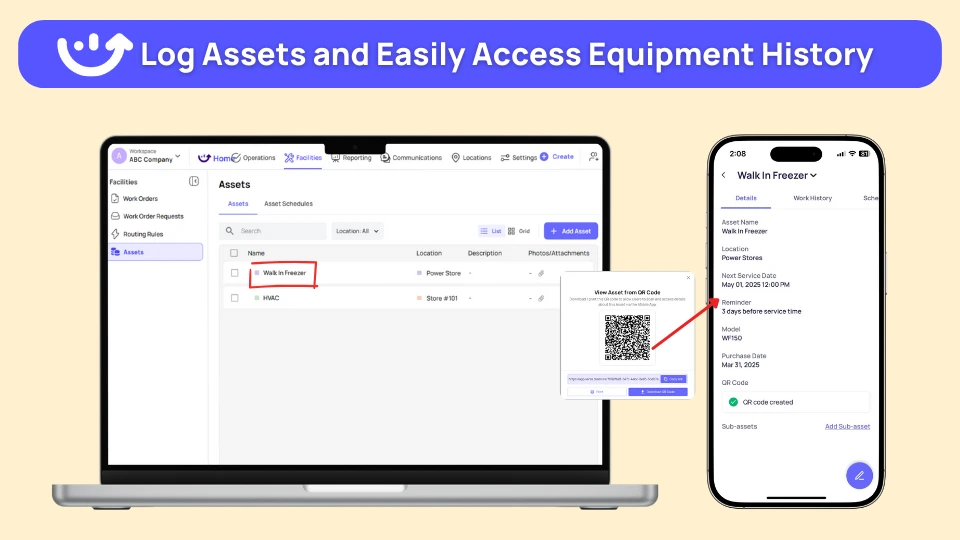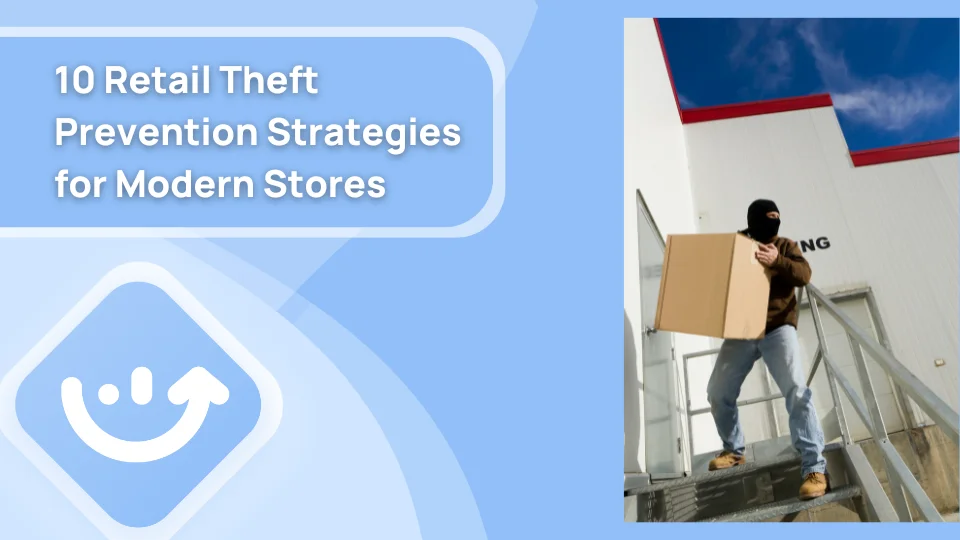Retail theft has evolved dramatically over the past decade. What used to be a challenge posed mainly by individual shoplifters has now grown into a complex, multi-layered threat involving organized retail crime, employee theft, self-checkout fraud, and digital manipulation of inventory systems.
Today’s retailers are confronted by highly coordinated theft operations, increasing economic pressures on consumers, and rapid shifts in store technology, all of which create new vulnerabilities.
This article explores the true cost of retail theft, followed by 10 highly effective strategies for preventing theft. Finally, we’ll show how Xenia enables retailers to strengthen store security, reduce shrinkage, and maintain operational excellence.

.svg)

Priced on per user or per location basis
Available on iOS, Android and Web
Understanding the True Cost of Retail Theft
Most retailers measure loss only in missing products. But the actual impact of theft is far more extensive:
- Direct Financial Losses: The most obvious cost is shrinkage, the disappearance of goods due to theft, fraud, or operational errors.
- Reduced Operational Efficiency: Broken processes, inaccurate inventory counts, and manual tracking create inefficiencies that make theft easier and detection harder.
- Staff Morale and Safety Concerns: Employees often feel unsafe confronting theft, especially when ORC groups pose threats. High-stress environments lead to turnover, absenteeism, and low engagement.
- Customer Experience Damage: Locked displays, reduced operating hours, and increased surveillance may reduce theft, but also frustrate honest customers.
- Brand Reputation Risk: When theft leads to stockouts, poor store appearance, or viral video incidents, brand image deteriorates quickly.
- Rising Costs of Security Technologies: As theft increases, so do costs for cameras, guards, gates, training, and manual investigations.
10 Effective Strategies for Retail Theft Prevention
Below are the most effective and modern approaches retailers are using today. Each strategy directly relates to real-world store operations and incorporates modern tools and best practices.
1. Strengthen Store Layout and Visual Surveillance
One of the most practical store security best practices is strategically designing your layout to discourage theft. A well-planned layout makes suspicious behavior easier to detect and reduces opportunities for concealment.
- Clear sight lines: Remove blind spots between aisles and ensure staff can visually monitor all areas.
- High-risk product placement: Keep small, high-value items near staffed counters or in well-lit areas.
- Mirrors and cameras: Use convex mirrors and visible video surveillance to increase perceived risk for would-be thieves.
- Open sight lines at entrances: Prevent customers from entering or exiting with merchandise unnoticed.
2. Implement Smart Asset Management Systems
Managing retail assets such as electronics, expensive consumables, locked merchandise, fixtures, and equipment is traditionally very manual. Missing items often go unnoticed for days or weeks, giving internal theft and external shoplifting more opportunities.
Modern asset management software helps retailers:
- Track assets with digital logs
- Audit asset conditions
- Monitor lending and returns (e.g. equipment shared between associates)
- Trigger alerts when assets are missing or out of place
- Maintain visibility of high-value items

3. Use QR Codes to Track and Verify Inventory in Real Time
Traditional inventory counts are often done weekly or monthly, which creates gaps where shrinkage occurs unnoticed. Implementing QR code inventory tracking solves this by enabling real-time monitoring. Some of the major benefits of QR code tracking in retail are:
- Instant verification: Staff can scan items during cycle counts or suspicious activities.
- Accurate reconciliations: Reduce errors that mask theft.
- Faster inventory audits: Eliminates manual paperwork.
- Improved product visibility: Associates can quickly identify mismatches or missing inventory.
4. Maintain Equipment to Prevent Security Blind Spots
Security systems are only as strong as their weakest points. A single broken camera, faulty alarm sensor, or burned-out light can create a blind spot tthat hieves quickly exploit.
Regular equipment maintenance logs ensure consistent, documented inspections of:
- CCTV cameras
- Alarm systems
- Electronic article surveillance (EAS) gates
- Lighting fixtures
- Smart locks
- Self-checkout kiosks
- POS terminals
5. Staff Training on Theft Prevention Protocols
Employees are your first line of defense, but they often lack structured guidance. A retail safety checklist ensures every associate follows procedures consistently.
Training Should Include:
- How to greet customers (deterrence through presence)
- Identifying suspicious behavior
- Safe confrontation protocols
- Understanding ORC indicators
- Securing fitting rooms
- Using scanning tools properly
- Proper bag checks for curbside or in-store pickups

6. Leverage Geo Stamps for Staff Accountability and Task Verification
Modern retailers use geo-tracking tools to verify in-store tasks, ensure patrol coverage, and track employee activity without micromanagement. Also, the use of Geo-Stamped Task Verification will help you in following:
- Verifying store walks and patrols
- Confirming checks of high-risk zones
- Monitoring delivery dock inspections
- Ensuring locked cases or cabinets were checked
- Verifying entry and exit monitoring tasks
7. Improve Document Management for Incident Reporting and Compliance
Paper-based systems slow down investigations and often lose critical details. A document management system centralizes all security documentation, such as:
- Incident reports
- Witness statements
- Camera request logs
- Inventory discrepancy records
- Compliance checklists
- Police case files.
8. Use Data Analytics to Identify Theft Patterns
Modern retail crime is sophisticated, and manual reviews aren’t enough. Analytics tools can:
- Track SKU-level shrink patterns
- Highlight unusual inventory movements
- Detect suspicious refund or void activity
- Identify employee behavior anomalies
- Compare sales vs. inventory trends
9. Strengthen Self-Checkout Monitoring
Self-checkout fraud is one of the fastest-growing forms of retail theft. Retailers can reduce losses by:
- Using weight sensors
- Increasing camera visibility
- Requiring barcode verification for high-value items
- Adding random audits
- Implementing AI-powered anomaly detection
10. Conduct Regular Store Audits
Routine audits confirm whether theft prevention systems are working. Mystery shoppers help identify procedural weaknesses, such as:
- Employees leaving exits unattended
- Fitting rooms with poor check-in/out controls
- Unlocked high-value cabinets
- Inaccurate inventory counts
Also See how retail audit software ensures standard execution

How Xenia Empowers Modern Retailers to Prevent Theft?
Xenia is an AI-powered operations Execution Platform that enables retailers to strengthen every aspect of store security. By combining digital checklists, asset tracking, inventory tools, workflow automation, and employee accountability systems, Xenia becomes the central hub for modern retail theft prevention.
Below are the key ways Xenia improves loss prevention:
- QR Code Inventory Tracking for Real-Time Accuracy: Xenia assigns QR codes to products and assets so staff can instantly scan items, verify presence, log adjustments, and spot discrepancies, closing the gaps thieves typically exploit.
- Smart Asset Management for High-Value Items: With digital identities for all assets, electronics, store equipment, POS systems, and security hardware, Xenia prevents unauthorized borrowing, misplacement, or internal theft.
- Automated Equipment Maintenance Logs: Xenia schedules and tracks inspections for cameras, alarms, sensors, lighting, and gates. If any security device fails, the system alerts managers immediately to avoid exploitable blind spots.
- Geo-Stamped Task Verification: Every patrol, back-room check, or entrance inspection is verified with location-based tracking, ensuring tasks are truly completed and reducing the risk of falsified checklists or ignored duties.

- Digital Checklists for Training and Procedure Compliance: Xenia standardizes opening/closing procedures, safety checks, fitting room controls, and cash-handling protocols—giving managers real-time visibility into compliance across all stores.
- Centralized Document Management for Incident Handling: All theft-related reports, witness statements, police correspondence, and investigation files are stored in one place, improving organization and supporting stronger case resolution.
- AI-Powered Insights to Spot Theft Patterns: Xenia analyzes operational and inventory data to reveal shrink trends, suspicious activity, and procedural gaps—helping retailers detect and prevent theft proactively.

Conclusion
Retail theft is no longer a minor inconvenience—it’s a multimillion-dollar threat affecting profitability, employee morale, and customer trust. Modern retailers need holistic, technology-driven solutions that address vulnerabilities across operations, staffing, asset management, and inventory tracking.
Implementing the top 10 retail theft prevention strategies outlined in this article helps retailers:
- Improve operational accuracy
- Strengthen store security
- Reduce shrink
- Empower employees
- Enhance customer experience
Platforms like Xenia take these strategies even further by digitizing and automating critical security workflows. With QR code tracking, asset management, equipment maintenance, geo stamps, digital checklists, and centralized documentation, Xenia gives retailers the tools needed to stay ahead of thieves and maintain operational excellence.

.svg)
.webp)
%201%20(1).webp)






.svg)
%201%20(2).webp)








